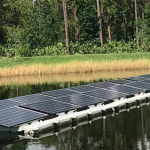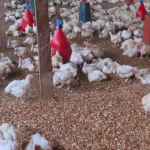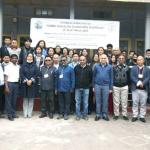ATREE News

Solar projects on water could come at a cost to the environment, alert experts
Madhya Pradesh government announced the world’s largest floating solar project of 600 megawatt (MW) capacity in the backwaters of the Omkareshwar dam. The project is expected to cover approximately 2000 ha of water area and will begin operation in 2022-23. In December 2020, Maharashtra announced a floating solar plant of 80 MW capacity on middle Vaitarana dam, under national energy security programme.

Workshop on 'Edible Insects for Sustainable Livelihood' underway at KSC
A 2-day workshop on "Edible Insects for Sustainable Livelihood" was organized by Ashoka Trust for Research in Ecology and the Environment (ATREE) in partnership with Department of Zoology, Kohima Science College Jotsoma on March 11.

Workshop on edible insects in Kma
Resource persons from prestigious universities from across the country have been invited to share their expertise on the subject during the workshop which was attended by more than 30 participants

Workshop on edible insects in Kma
Resource persons from prestigious universities from across the country have been invited to share their expertise on the subject during the workshop which was attended by more than 30 participants from the entire Northeast region.

[Explainer] Understanding the science behind avian influenza
There is rising panic among the public regarding the transmission of the flu to humans. To date, 40,000 birds are culled in Kerala alone. Standard precautions suggested by WHO are to follow hygienic cooking practices and to properly cook poultry since cooking temperatures are sufficient enough to kill the Influenza A (H5N8) virus.

‘Edible insects for sustainable livelihood’
Entomophagy (eating insects) is not a new concept in North East India, from exotic to common ones, insects are more than just a delicacy.

Uttarakhand floods highlight the need to factor in the environment while planning development
In complex interactions between climate change processes, and natural climate variability with geology and human activities, attribution to any one factor can be difficult.

Understanding the Alarm Around Asian Giant Hornets in the US
Asian giant hornets, known infamously as “murder hornets” are not nearly as murderous as they’re often made out to be.

Nepal forests offer new clues to unlock carbon potential
According to Jagadish Krishnaswamy, there are ways to incorporate size variety even when dealing with new plantations. Instead of selecting a clear piece of land, he suggested, planners could enrich a degraded forest, planting around existing trees. “You could identify sites [that have been cleared for plantation] but still may have a few large trees somewhere, and maybe the rest of it can be enriched or restored”

Genomics offer clues to how forest trees responded to the last Ice Age
Genomic datasets will directly contribute to designing future in situ conservation networks and help prioritise populations to archive ex-situ, especially for endemic species and the ones with low population size, it will be possible to identify a population/ individuals with high adaptation potential